How to Start Creating Facebook Instant Articles for Your Blog: Facebook and WordPress Team Up
Former Head of Content at Buffer
Facebook has opened up Instant Articles to publishers —of any size, anywhere in the world. This post guides you through how to connect your WordPress blog and Facebook Instant Articles.
To make publishing to Facebook easier for the 25% of the web that uses WordPress, Facebook has teamed up with Automattic, parent company of WordPress, to build a free plugin for Instant Articles. This plugin enables anyone with a WordPress blog to seamlessly share their content as Facebook Instant Articles.
If you’re looking to increase engagement and reach of your content, Instant Articles could be the way to go as early analysis suggests that people engage more deeply with the immersive experience and share Instant Articles with their friends more often than standard web articles.
In this post, I’d love to share with you a little on how Instant Articles work and how you can get your blog set up with Instant Articles using the WordPress plugin.
Let’s get into it! ?
How does it work?
Facebook has worked with a small group of publishers on WordPress to beta test the plugin as a way to quickly and seamlessly adapt web content for the Instant Articles format. Instant Articles load content in Facebook’s News Feed up to ten times faster than standard web articles, and are optimized for the mobile reading experience.
The native Facebook format includes a built-in suite of interactive tools that help stories come to life on mobile, including auto-play video and tap-to-zoom image galleries.
In a blog post, Facebook noted how the plugin formatted this Foreign Policy story for Instant Articles:
For example, the plugin recognizes the image found in this Foreign Policy article and specifies the correct markup so the photo renders properly in the Instant Article. The photo expands to fill the screen when tapped and allows exploration by simply tilting the phone.
Below you can see the Instant Article that was optimized from WordPress using the plugin:
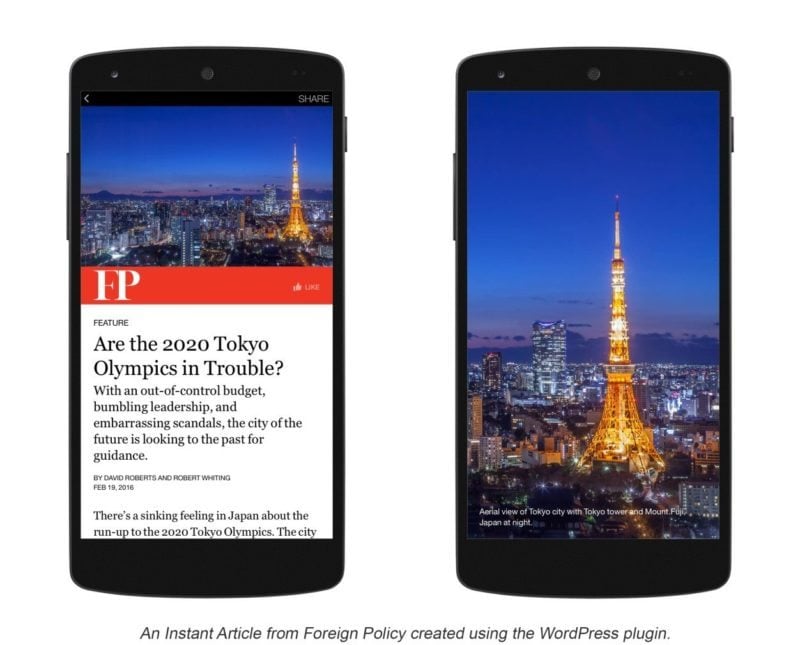
In their blog post, Facebook note that the plugin recognizes the image found in this Foreign Policy article and specifies the correct markup, so the photo renders correctly in the Instant Article. The photo expands to fill the screen when tapped and allows exploration by simply tilting the phone.
Another example is the below Zap2it article from Tribune Broadcasting:
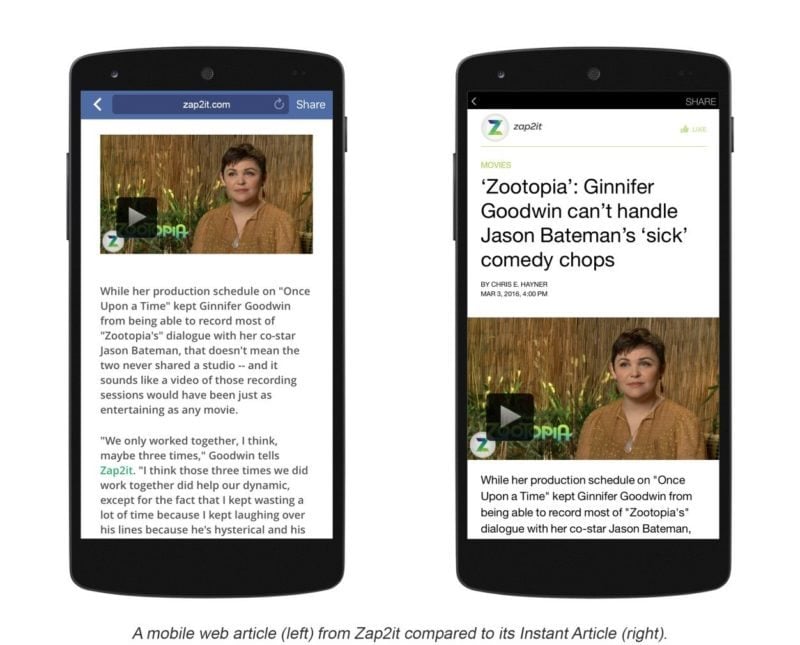
In this example, the third-party video player embedded in this is beautifully adapted for the Instant Articles experience. The plugin also supports native autoplay video as well as social and interactive graphic embeds.
Once the WordPress plugin has been installed, Instant Articles are generated through an RSS created by the plugin and connected to your Facebook page.
How you can get up and running
The plugin can be installed now via Github and will soon be added to the WordPress plugin directory. To get started, download the ZIP file from Github:
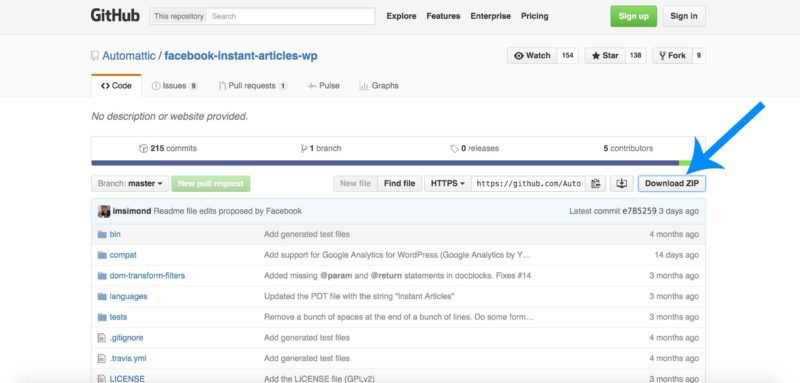
Once you’ve downloaded the ZIP file from Github, you’ll then need to install it to WordPress. To do this, hover over the Plugins option in your WordPress sidebar and click ‘Add New’:
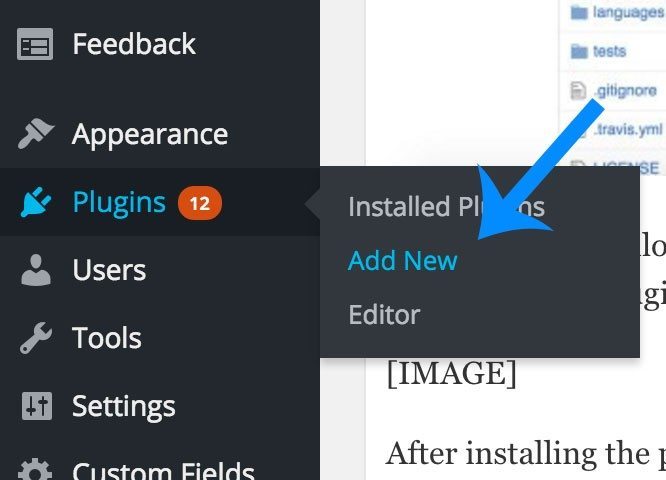
You’ll now be taken to the ‘Add Plugins’ page and as the ZIP file needs to be manually uploaded, select ‘Upload Plugin’ and choose to upload the ZIP file you downloaded from Github:
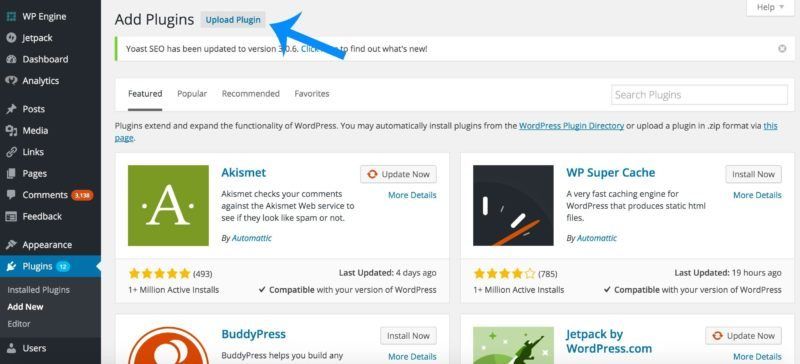
After installing the plugin, a new type of feed will be added to your site, with an address in the form /?feed=instant-articles or /feed/instant-articles, depending on your WordPress permalink settings. This new feed is similar to a traditional RSS feed but includes the extra data and markup required by Facebook’s specification.
You can check the feed is working by visiting [your blog domain]/?feed=instant-articles or [your blog domain]/feed/instant-articles.
Connecting the RSS feed to your Facebook Page
Next up, you’ll need to connect your new feed to your Facebook page.
Editor’s note: I’d recommend bookmarking this page and coming back to it when Instant Articles are rolled out to all users, as the majority of Pages won’t have this setting available just yet.
To connect your RSS feed to your Facebook page you need to visit the Admin settings for your Facebook Page. From the top of your Page, click Settings:
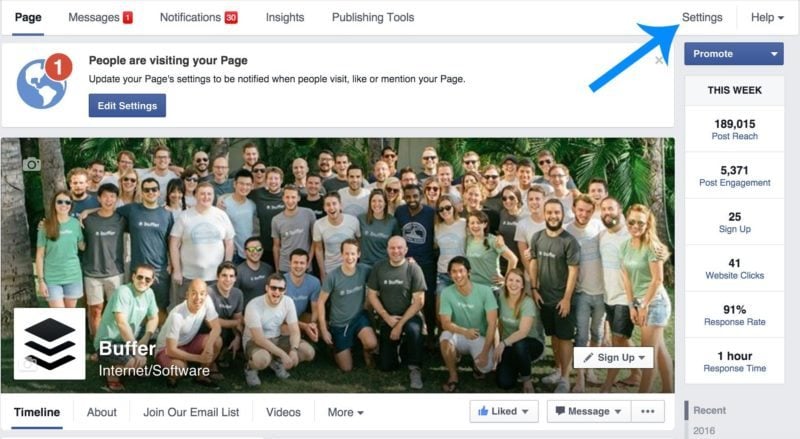
Then select Instant Articles from the menu on the left of the screen. (This setting is not currently available to everyone and will be rolled out to all Facebook page owners during the global release before April 12, 2016.)
From the Instant Articles page, you’ll be able to add your RSS feed – this will be the feed created by the WordPress plugin:

After you’ve submitted your feed, it’ll be reviewed by Facebook to verify that all Instant Articles generated from your website are properly formatted and adhere to their community standards and content policies before you’ll be able to start pushing content to the platform.
Once your RSS feed has been approved, all new articles received from your RSS feed will be automatically provided to readers on Instant Articles-enabled devices (iPhone and Android phones) with the content in Instant Article form.
To turn off automatic publishing, check the ‘Import all articles as drafts’ checkbox, which will ensure that all new articles received from your RSS feed are stored as unpublished drafts until you manually publish them through your Page admin dashboard.

Your Instant Articles library
All of your drafts and published Instant Articles will be available to you in a library.
To view your library, from the top of your Page, click Publishing Tools and then select Instant Articles from the menu on the left of the screen.
The Instant Articles library looks like this:
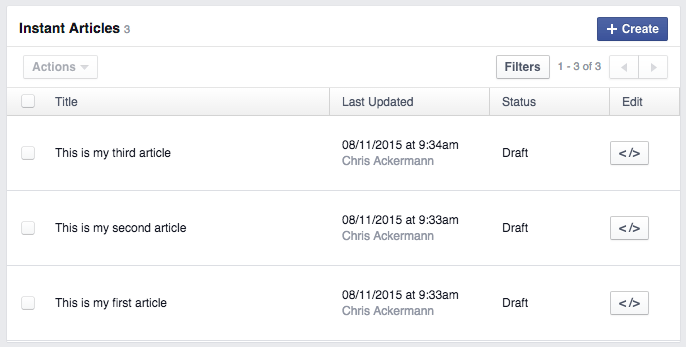
From here you can edit articles and choose which of your drafts to publish.
Editor’s note: The Instant Articles library will be available to all Pages as Instant Articles are rolled out to all publishers before April 12.
Over to you
Thanks for reading! And I hope you found this post useful.
I’m super excited to experiment with Facebook Instant Articles once they’re rolled out to all publishers and can’t wait to see how they help increase the reach and engagement of our content.
It’ll be fun to see how Instant Articles evolve. Facebook hasn’t shied away from making tweaks during testing as the company has continued to tweak the Instant Articles platform over the past few months, with publishers now able to capture email addresses through Instant Articles.
Loss of revenue had also been a concern for some when it comes to publishing on Facebook and in December the company made it easier for publishers to generate ad revenue from Instant Articles too.
What do you think to Instant Articles? Will be you be connecting your blog and publishing to Facebook? I’d love to hear your thoughts in the comments below.
Try Buffer for free
180,000+ creators, small businesses, and marketers use Buffer to grow their audiences every month.
Related Articles

Tips, news & Buffer updates for your social media journey
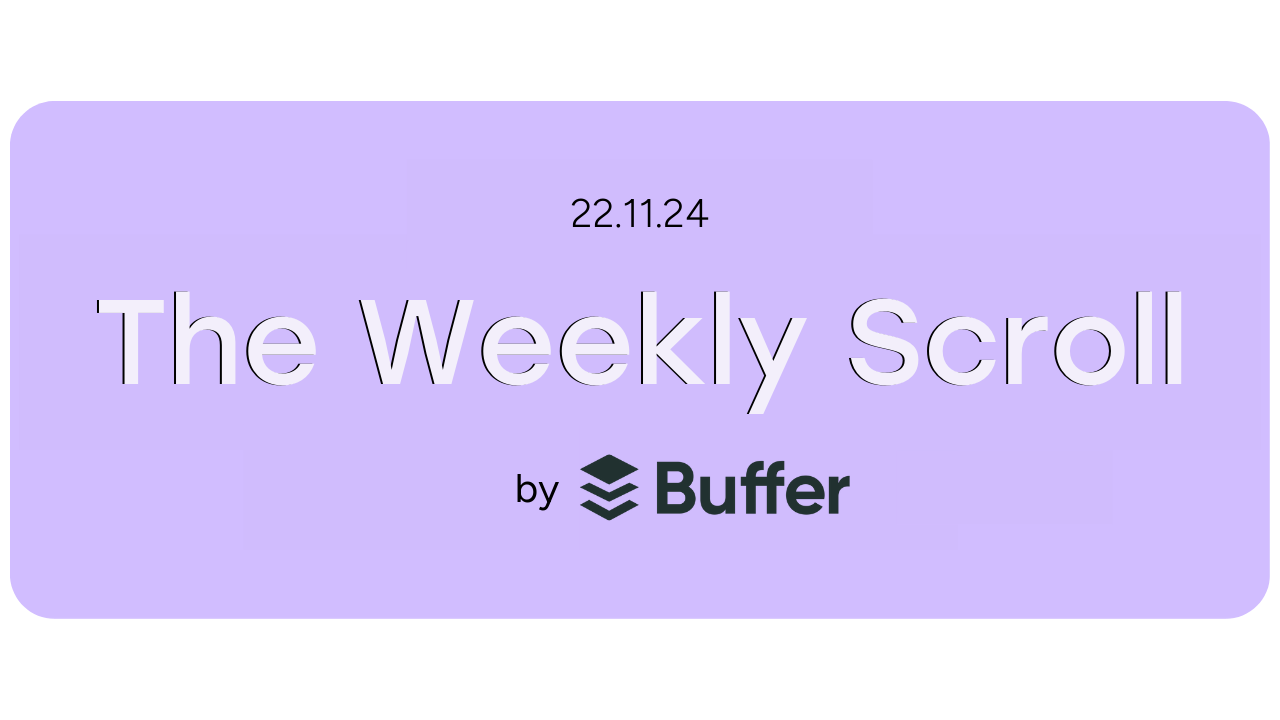
Tips, news & Buffer updates for your social media journey

Get the latest updates in the social media industry and creator economy – with a side of Buffer flavor.